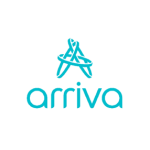The Government has set out its Inclusive Transport Strategy as Helen Dolphin, a member of the Disabled Persons Transport Advisory Committee (DiPTAC), explains
The Department for Transport (DfT) has set out its Inclusive Transport Strategy (ITS) that aims to improve transport network accessibility for disabled people across the UK.
It is hoped that the measures set out in the ITS will make travel fully accessible and inclusive for disabled passengers by 2030.
The ITS follows an Accessibility Action Plan (AAP) consultation, that received 1,000 responses from disabled people and passenger groups. In parallel, the DfT has also published a summary of feedback to the draft AAP consultation.
The ITS covers all transport modes and has five main themes encompassing a wide range of measures to support people with disabilities.
Although there are a lot of improvements planned for rail, including £300m to make stations more accessible, bus travel is recognised as an extremely important mode for disabled people and so features significantly in the ITS.
Infrastructure
One of the five themes is improving physical infrastructure. The DfT says it wants to ensure that vehicles, bus stations and streetscapes are designed, built and operated so that they are easy to use for all.
Although 98% of buses in England are compliant with the Public Service Vehicles Accessibility Regulations (PSVAR), the ITS highlights that the journey taken to the transport hubs is just as important as the vehicle.

This was highlighted by respondents to the AAP who said that no matter how well designed the bus is, if the bus stop is difficult to navigate to or does not have the accessible information or facilities required, disabled people will have significant challenges using the service.
Therefore the ITS says that during 2019, the DfT will commission research to identify a standard for accessible bus stations and stops and develop a toolkit to assist local authorities in improving the accessibility of this infrastructure.
Wheelchair space
A recurrent response to the draft AAP consultation is the design of the wheelchair space on the bus.
Several aspects of existing designs receive criticism including: The use of a reference wheelchair that is smaller than most existing wheelchairs, failure to design in sufficient space to manoeuvre into the wheelchair area, a lack of stability when buses turn corners and the inaccessibility of bells from the wheelchair space.
The ITS says the DfT will review its use of the reference wheelchair standard and make recommendations by 2023 on its continued use, or the use of an alternative specification.
Although it was raised by respondents to the AAP, I was disappointed that no suggestions have been made in the ITS with regards to the problem that wheelchair users experience when buses turn corners.
I had hoped at the very least, that a review of the reliability of the pole in stopping wheelchairs falling over, may have been recommended.
Passenger rights
Another theme in the ITS is awareness and enforcement of passenger rights. Where bus travel is concerned, a frequent complaint is who has priority in the wheelchair space.
Earlier this year a task-and-finish group was formed to consider the problem and the DfT says it will announce later in 2018 how it will seek to prioritise access to the wheelchair space.
This follows the Supreme Court’s 2017 ruling in the case of First Group PLC vs. Paulley, requiring bus drivers to do more than simply request passengers vacate the wheelchair space when it is required by a wheelchair user [routeone/News/25 January 2017]
The DfT also plans, by spring 2019, to release the first version of an online tool to assist disabled people reporting issues they encounter when travelling by bus.
This will initially focus on the use of ramps and lifts when boarding, but may be capable of being extended to cover other categories of access issue. Enforcement action will be taken by the Driver and Vehicle Standards Agency (DVSA) and, where appropriate, the Office for the Traffic Commissioner against non-compliant operators.
It is recognised that for disabled people, the service and assistance provided by staff is vital for a good journey. This is why ensuring that staff understand the needs of all disabled people and can provide better assistance, is one of the five ITS themes.
Best practice
During 2019, the DfT will publish best practice guidance for delivering training across the bus sector.
This guidance will assist operators to comply with the new mandatory disability equality and awareness training requirement that came into force across the sector in March.
Also, in 2019 the DfT will develop and launch an Inclusive Transport Accreditation Scheme to allow the best transport operators to receive formal recognition for the positive actions they are taking to improve disabled passengers’ experiences. This will be a great way to get operators to share best practice.
Best practice is also shared in the ITS with Brighton & Hove Buses and Metrobus getting a special mention for their partnership work with Guide Dogs developing ‘My Guide’ that equips bus staff with the knowledge, skills and confidence to safely guide people with sight loss.
Information
Another theme in the ITS is improving information with the aim that operators provide travel information in formats that all passengers can easily access and understand, before and during a journey.
The AAP received several responses highlighting the importance of information in giving people the confidence to travel.
The DfT has addressed this need by saying that by the end of 2018, it will consult on draft Accessible Information Regulations, requiring the provision of audible and visual upcoming-stop and route information on local buses in Great Britain; and by 2022, to have seen a “significant increase” in the availability of information on-board buses.

It has also announced £2m in the current financial year to help speed up the rollout of audio-visual information across bus fleets.
It also says that by 2020, by working with the bus industry, the DVSA and passenger representatives will encourage improved promotion of information about the rights of disabled travellers; what they are entitled to expect in terms of service and facilities, as well as developing easier ways to register complaints when things go wrong.
Opportunities for all
The final theme of the ITS is the future of inclusive mobility. This is about ensuring that technological advances and new business models provide opportunities for all, and that disabled people are involved from the outset in their design.
The DfT has pledged that it will undertake, by 2028, a review of the continued efficacy of the PSVAR and consider how the needs of disabled people should be met in the future.
As a disabled person, I very much welcome this ITS.
It is unacceptable that in 2018 disabled people still struggle to find an accessible toilet or secure the help required to catch or get off a train or bus.
I also welcome the fact that this strategy is not just about improving infrastructure but includes raising awareness of disabled passengers’ rights, plans for staff training and improvements to accessible information.
I just hope that transport organisations and their staff get behind all the changes required to deliver the strategy across the road, bus and rail networks.
Find out more: Strategy at https://www.gov.uk/government/publications/inclusive-transport-strategy

























